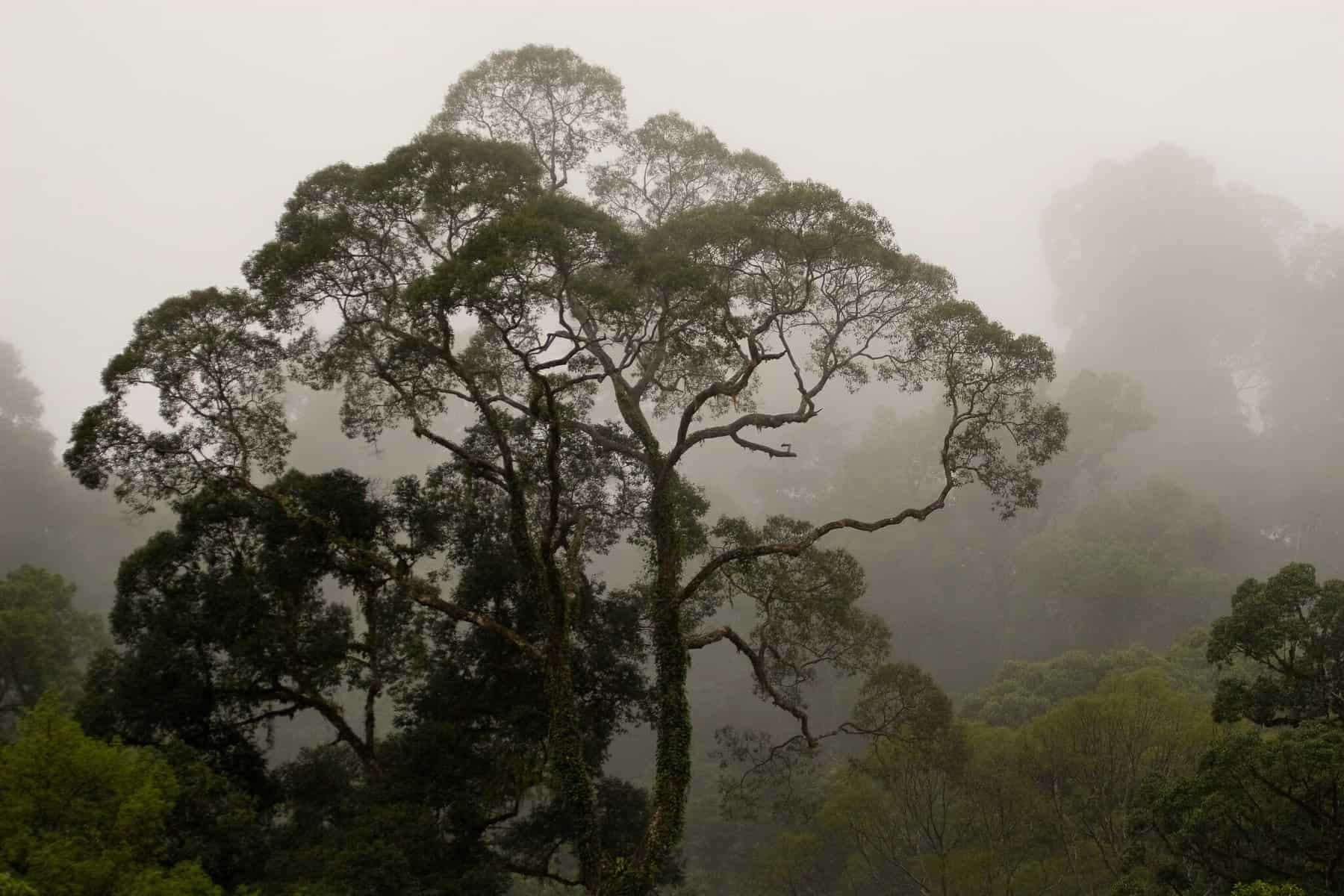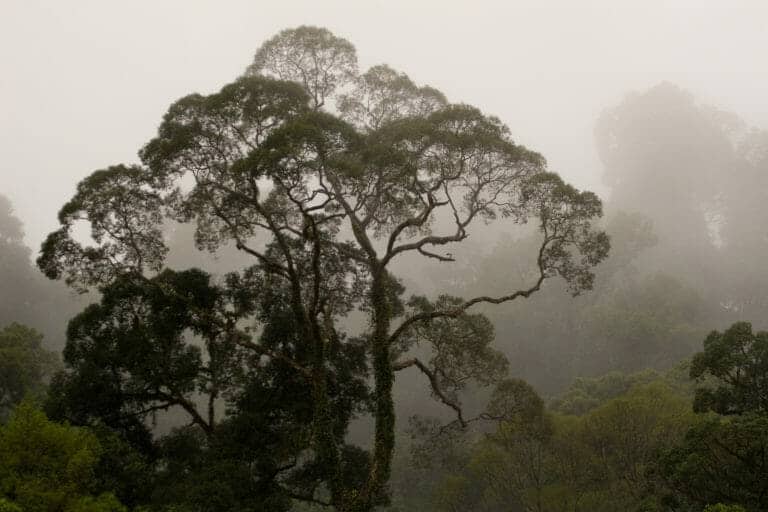By emitting moisture, trees play a crucial role in water cycles and global rainfall. Brunei Ministry of Primary Resources and Tourism
We could re-wet dry landscapes with the right theory. Could the ‘biotic pump’ be it?
There are a few different levels of understanding about the water cycle. There are the diagrams hung in elementary schools, showing water evaporating up from the ocean into clouds, then falling back down to the ground. A step beyond, there’s a general understanding that takes into account evaporation from trees, wind patterns and the like.
Then, there are the highly technical approaches that look at a wild array of minutia and contingencies: nighttime sap flow, isoprene emissions, ice-nucleating particles released from decaying leaves, even the phases of the moon.
And yet, even with all of these details researched and logged and plugged into different models and algorithms, it’s hard to trust a given morning’s forecast. Cloud behavior and rainfall still remains a mystery – let alone how they will react with climate change.
“The models just don’t do this,” says Center for International Forestry Research (CIFOR) Associate Douglas Sheil, who also serves as faculty of environmental sciences and natural resource management at the Norwegian University of Life Sciences. “And the problem is that we’re using these models to predict climate change, when they can’t even predict current rainfall patterns correctly.”
Taking progress on this matter into his own hands […]
Full article: Figuring out the water cycle… still – CIFOR Forests News
More about the water cycle:
Forests are key to combating world’s looming water crisis, says new GFEP report
Severe Global Water Cycle Shifts Due to Abrupt Climate Change
How large-scale water cycles influence earthquakes in California
We can see how humans have altered Earth’s water resources
Change in Water Storage Maps Added to Living Atlas
Water shortages can destroy cultures: Interplay between society and hydrological effects
Chief Arvol Looking Horse’s Message on Water
Here Comes the Sea: The Struggle to Keep the Ocean out of California’s Coastal Aquifers



